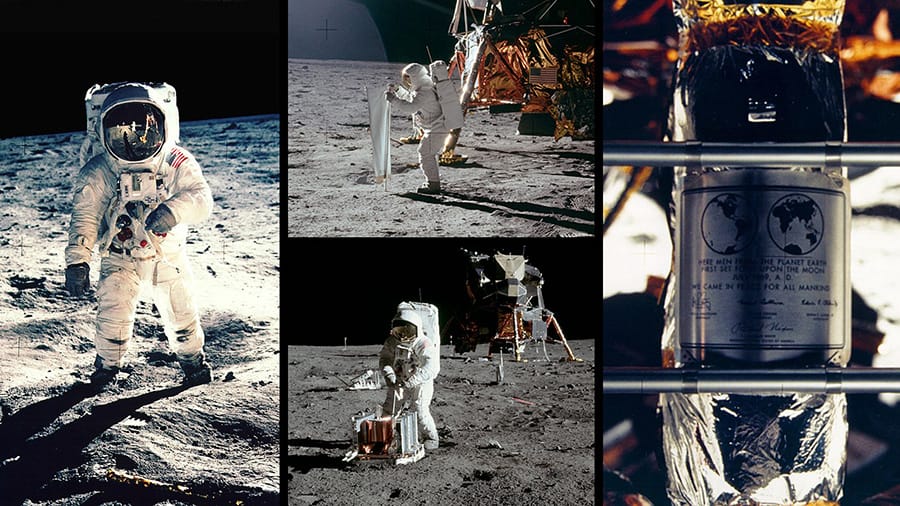Engineers dive headfirst into tough, sometimes seemingly impossible challenges. Their secret weapon? First principles thinking!
First principles thinking helps you dissect complex problems and address them from the ground up. This approach empowers you to challenge flimsy assumptions and forge fresh solutions. It opens doors to critical questions like:
- Does this assumption actually make sense?
- Is there any scientific evidence backing this assumption?
- Why is this element the root cause of a particular limitation?
Elon Musk, a fierce advocate of this mindset, has fueled innovation in his numerous ventures. He explains:
“I think it’s important to reason from first principles rather than by analogy. The normal way we conduct our lives is we reason by analogy. [With analogy] we are doing this because it’s like something else that was done, or it is like what other people are doing. [With first principles] you boil things down to the most fundamental truths…and then reason up from there.”
To emphasize the power of first principles thinking, let’s dive into several real-life examples. But first, let’s explore its benefits.
What makes first principles thinking so advantageous?

Usually, people tackle new problems by drawing from existing solutions – a process known as reasoning by analogy, as mentioned in Musk’s quote.
We tend to assume that if a solution worked for one problem, it should work for a similar, unsolved issue. However, many existing solutions are far from perfect, riddled with flawed assumptions, beliefs, and practices.
By relying on these flawed approaches, we limit our problem-solving prowess and stifle the pursuit of groundbreaking solutions. Musk elaborates:
“It is important to view knowledge as sort of a semantic tree — make sure you understand the fundamental principles, i.e. the trunk and big branches, before you get into the leaves/details or there is nothing for them to hang onto.”
Discover more strategies for learning like Elon Musk in this article.
4 simple steps to embrace first principles thinking
Before we explore our examples, let’s discuss how you can adopt this way of thinking. I’ll use starting a new business as a rookie for my example.
All you know about business comes from your small town, where a row of brick-and-mortar stores make up the local scene.
STEP #1: Identify your problem
How can you start and run a successful business?
STEP #2: List your existing assumptions
Here are your current assumptions:
- Starting a business is costly, challenging, and bewildering
- Customers increasingly shop online, leaving fewer brick-and-mortar customers
- There’s a risk of getting sued
STEP #3: Break your problem down into fundamental principles
Dissect your problem into the most basic truths. Challenge established beliefs and best practices. Some questions you might ask include:
- What’s the simplest way to incorporate a business?
- How can I effectively safeguard against liability concerns?
- How can I source products to sell on a tight budget?
- What’s the best approach to getting help without hiring employees?
In essence, you defy the socially accepted beliefs that your town’s folks swear by. Instead, you challenge the idea that starting a business is inherently difficult.
STEP #4: Craft unique new solutions
Finally, seek out new solutions like the following:
- Use LegalZoom for affordable incorporation
- Utilize Amazon tools to identify top-selling products with minimal competition
- Source inexpensive products from China
- Employ the Shopify platform to sell online and minimize overhead costs
- Leverage social media influencers
- Create a blog and YouTube channel to expand marketing reach from local to global
- Hire virtual assistants for cost-effective labor
These steps help you optimize traditional ways of starting a business in your town, enabling you to maximize profits with minimal extra effort.
Example #1: Body engineering
I’ve been into bodybuilding since I was 15 years old. However, I never dabbled in the murky waters of anabolic compounds.
Nonetheless, I’ve always been intrigued by how these substances work within the human body, both chemically and biologically.
This is particularly interesting since no scientific guidelines exist for human mega-dosing. You can’t just ask,
“Hey doc, what’s a good steroid stack for building 20 pounds of muscle in 6 months?”
Instead, bodybuilders turn their own bodies into living science experiments. By understanding human biology and physiology, they can successfully answer questions like:
- Which compounds should I take to build muscle and shed fat?
- How much of each compound should I take and for how long?
- How can I stack compounds effectively?
- What supplementary products can I use to minimize side effects?
- What symptoms should I watch out for?
Now, I’ve never heard a bodybuilder mention ‘first principles thinking,’ but what they do with their diet and anabolic regimen is precisely that.
Example of an oral anabolic strategy for a bodybuilding contest prep
Let me walk you through a hypothetical approach to a bodybuilder’s pre-contest supplement stack, making it more relatable and engaging.
Kick off your contest diet with a potent androgenic oral compound like Anadrol. As your diet progresses, gradually reduce the Anadrol dosage to get rid of that pesky subcutaneous water retention.
Next, use two very anabolic compounds, Anavar and Winstrol. You’ll want to amp up their dosage week by week, all the way until the big show. The cherry on top? Neither Anavar nor Winstrol lead to much of that unwanted fluid retention.
Pair these compounds with a disciplined diet and workout plan for the ultimate synergistic effect. You’ll maximize muscle hypertrophy, shred fat, and keep side effects at bay. But to truly nail this, you need to know the chemistry of anabolic-androgenic compounds, especially how they work inside the human body at superphysiological levels. Plus, don’t forget to brush up on human physiology and the endocrine system.
Sure, this flies in the face of conventional wisdom. Some might argue that certain muscle levels are unattainable and consuming these compounds will be your one-way ticket to the afterlife. That’s why it’s crucial to adopt first principles thinking in body engineering.
Example #2: Substation design

Over the years, I’ve designed countless substations of all shapes and sizes. There’s a tried-and-true method to the madness, and I’ve got it down pat.
I stick to established design standards, creating a nearly foolproof design process. But don’t get me wrong – it’s not without its challenges.
Here’s the catch: the standard process crumbles when I have to retrofit an existing substation, especially when I’m tasked with minimizing downtime during construction.
To tackle these issues, I’ve got to have a deep understanding of the following fundamentals:
- How substations operate as a whole
- Specifications and operations of various types of substations
- Interdependence of substation equipment
- Substation construction process
- Lead times for substation equipment
- Real-world construction limitations (like discovering contaminated soil)
Armed with this knowledge, I can tell if a retrofit design will trigger a domino effect of problems, and I’ll know the steps to take to ensure the substation is only out of commission for 24 hours during construction.
For a closer look at my process, check out my real-world substation construction sequencing steps. It’ll give you a deeper understanding of the design decisions I’ve made when faced with similar challenges.
Example #3: Elon Musk’s pursuit to improve battery technology
Elon Musk is all about batteries! Tesla vehicles rely on powerful batteries at their core, and SpaceX benefits from this tech too. It’s no wonder that Elon is eager to develop even better batteries.
Here’s how Elon explains Tesla’s approach to enhancing battery technology through first principles thinking:
Somebody could say, “Battery packs are really expensive and that’s just the way they will always be… Historically, it has cost $600 per kilowatt hour. It’s not going to be much better than that in the future.”
With first principles, you say, “What are the material constituents of the batteries? What is the stock market value of the material constituents?”
It’s got cobalt, nickel, aluminum, carbon, some polymers for separation and a seal can. Break that down on a material basis and say, “If we bought that on the London Metal Exchange what would each of those things cost?”
It’s like $80 per kilowatt hour. So clearly you just need to think of clever ways to take those materials and combine them into the shape of a battery cell and you can have batteries that are much, much cheaper than anyone realizes.”
“You just have to think of clever ways to take those materials and combine them into the shape of a battery cell, and you can have batteries that are much, much cheaper than anyone realizes.”
By employing first principles thinking, Elon gains an edge over his competitors. He recognizes that there’s still plenty of room for improvement. The laws of nature didn’t set the limits on batteries – humans did. And just as we set those limits, we can create new ones, just like Elon is doing. He’s always on the hunt for incremental enhancements, refusing to accept technological boundaries.
Example #4: NASA’s Apollo missions to the Moon

Before the Apollo 11 mission, no human had ever set foot on the Moon, and no agency had seriously invested in lunar travel.
To many countries and agencies, the mission seemed impossible. Leaving Earth to travel 238,900 miles through radiation-filled space was a daunting prospect.
NASA engineers had to use first principles thinking to break down each aspect of space travel, then figure out how to engineer solutions for those challenges. For instance, when designing the astronaut spacesuit, engineers considered the following elements:
- Maintaining enough pressure to keep body fluids in a liquid state
- Providing oxygen and removing carbon dioxide
- Keeping a comfortable temperature
- Ensuring flexibility for all human joints
- Allowing finger mobility to handle tools
- Protecting against meteor dust
- Avoiding flammable materials
- Minimizing suit weight
These design elements emerged from a deep understanding of space travel. In the process, NASA gifted us with some incredible modern tech, like:
- Renewable energy through solar panels
- Freeze-dried food
- Fireproof materials
- Cooling suits
- Spring tires
- Integrated circuits
- Cordless tools
We can learn loads about mindset from NASA engineers.
Conclusion
First principles thinking is an awesome tool that helps you break free from outdated methods and conventional wisdom.
Imagine having a crystal-clear lens for your engineering work, where you’re not held back by human limitations.
Who knows? You might just uncover some thrilling new possibilities and unleash your full potential as an engineer.
Do you use first principles thinking? If so, how has it helped you in your engineering work?
